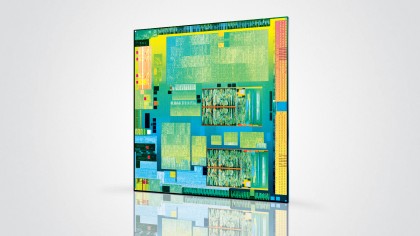Intel intros new Atoms – but can it break into the tablet market?
The Atom processors previously known as Bay Trail

Intel has officially launched its Intel Atom Z3000 series of procesors, aimed squarely at the tablet and low-power computing market.
But the question remains – can it really break into a segment where ARM is dominant and Intel is just a tiny player?
The corporation is holding the Intel Developer Forum (IDF) this week in San Francisco, where TechRadar is in attendance. The new 22nm silicon supports Windows 8 (including Windows 8.1, of course) as well as Android.
But Intel needs Bay Trail to actually appear in a decent number of tablets, and that's what we're hoping to see this week at IDF.
The Z3700 Series are quad-core SoCs for Windows and Android, while the dual-core Z3600 series are for Android-only devices. All the new parts feature Silvermont cores as well as integrated Intel HD graphics. Both will butt up against AMD's Jaguar-based Kabini APUs.

Intel is claiming But there are concerns over the performance of Bay Trail – early experiences of the Bay Trail-toting 8-inch Toshiba Encore tablet at IFA 2013 weren't brilliant, while Intel admitted in its conference call to the press that there would only be 32-bit solutions for Windows available this side of Christmas, with the performance boost of 64-bit to follow in the first part of 2014.
In a briefing with TechRadar Chris Walker, Intel's head of tablets explained: "Basically it comes down to what the market needs - the priority was to deliver a 32-bit [experience] for holiday [Christmas] and to deliver a full 64-bit experience in Q1" Intel says this will fulfil consumer orientated pricing for the holiday season.
Sign up to the TechRadar Pro newsletter to get all the top news, opinion, features and guidance your business needs to succeed!
"Bay Trail is our first ground up reengineering of Atom, the whole package has been redesigned for tablets."
In terms of battery life on a tablet, Intel is talking about 8 plus hours of video and web playback on both Windows 8.1 and Android from launch, while Intel is also talking up LTE performance, too.
Intel has favoured multi-core over multi-threading with Atom. Principal engineer Rajesh Patel explained why. "The key decision for us was to accelerate single thread performance because most apps use single thread.
"We've been waiting for multi-threading to come along but it's taking some time. Multi-threading is here to stay in the mobility space, but it's come in the form of multi-cores. For multi-threaded apps we can deliver the [same] performance at lower power."
Bay Trail performance
Toshiba's Encore features the Atom Z3770 clocked at 1.5GHz but at IFA last week ExtremeTech found Windows 8.1 slow on the device. Toshiba said the tablet needed further optimisation, but as the site points out, the HD 4000 graphics is a "fairly well-known entity".
Intel's Francois Piednoel did tweet a healthy 1.47 pts score in Cinebench 11.5 – that backs up Intel's claim that Bay Trail has twice the performance of the previous Clover Trail Atom. Intel also claims a 3x improvement in graphics power.
As for its market position, Bay Trail will obviously slot in underneath the Haswell-generation Core i3, i5 and i7.
"Haswell plays at $599 and above, Bay Trail will play at $199 and above," says Walker. "This also extends to [business]. We're ready for business with Windows in a way that no other device can do. These play together. Atom comes in as a great solution."
"You still need a Core for an Ultrabook. For 2 in 1 devices (like convertibles) we feel it's about Core for more performance headroom and Atom for mobility."
- Now why not check out The future of AMD: consoles, tablets and hybrids
Dan (Twitter, Google+) is TechRadar's Former Deputy Editor and is now in charge at our sister site T3.com. Covering all things computing, internet and mobile he's a seasoned regular at major tech shows such as CES, IFA and Mobile World Congress. Dan has also been a tech expert for many outlets including BBC Radio 4, 5Live and the World Service, The Sun and ITV News.